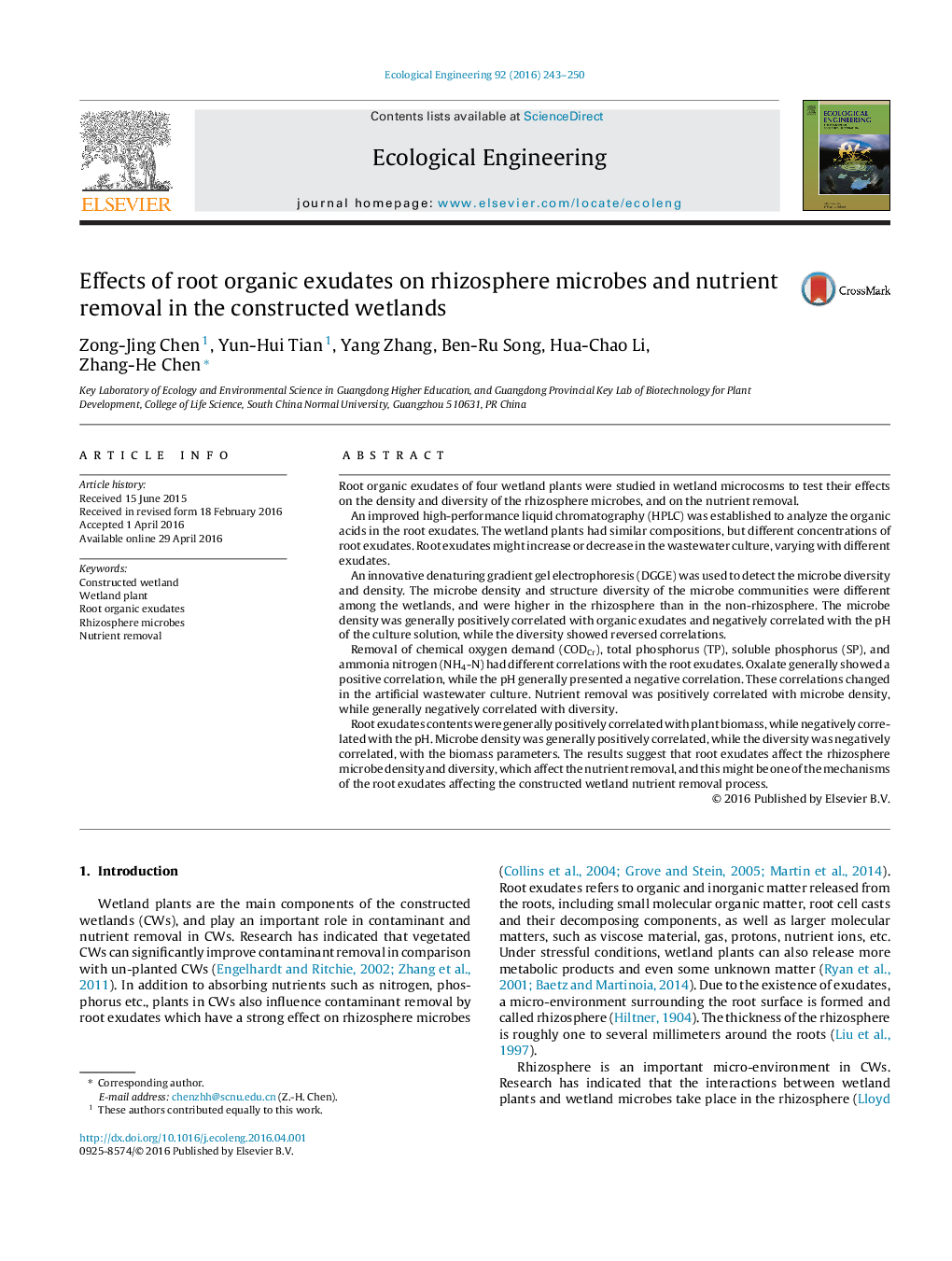| Article ID | Journal | Published Year | Pages | File Type |
|---|---|---|---|---|
| 4388631 | Ecological Engineering | 2016 | 8 Pages |
•An improved HPLC method was established to analyze the root exudates.•An optimized DEGE method was built to detect the CW microbe taxa and diversity.•Microbe density and diversity were significantly different among the specific CWs.•Root exudates correlated with nutrient removal, microbe density and diversity.•Relations between root exudates and nutrient removal.
Root organic exudates of four wetland plants were studied in wetland microcosms to test their effects on the density and diversity of the rhizosphere microbes, and on the nutrient removal.An improved high-performance liquid chromatography (HPLC) was established to analyze the organic acids in the root exudates. The wetland plants had similar compositions, but different concentrations of root exudates. Root exudates might increase or decrease in the wastewater culture, varying with different exudates.An innovative denaturing gradient gel electrophoresis (DGGE) was used to detect the microbe diversity and density. The microbe density and structure diversity of the microbe communities were different among the wetlands, and were higher in the rhizosphere than in the non-rhizosphere. The microbe density was generally positively correlated with organic exudates and negatively correlated with the pH of the culture solution, while the diversity showed reversed correlations.Removal of chemical oxygen demand (CODCr), total phosphorus (TP), soluble phosphorus (SP), and ammonia nitrogen (NH4-N) had different correlations with the root exudates. Oxalate generally showed a positive correlation, while the pH generally presented a negative correlation. These correlations changed in the artificial wastewater culture. Nutrient removal was positively correlated with microbe density, while generally negatively correlated with diversity.Root exudates contents were generally positively correlated with plant biomass, while negatively correlated with the pH. Microbe density was generally positively correlated, while the diversity was negatively correlated, with the biomass parameters. The results suggest that root exudates affect the rhizosphere microbe density and diversity, which affect the nutrient removal, and this might be one of the mechanisms of the root exudates affecting the constructed wetland nutrient removal process.
